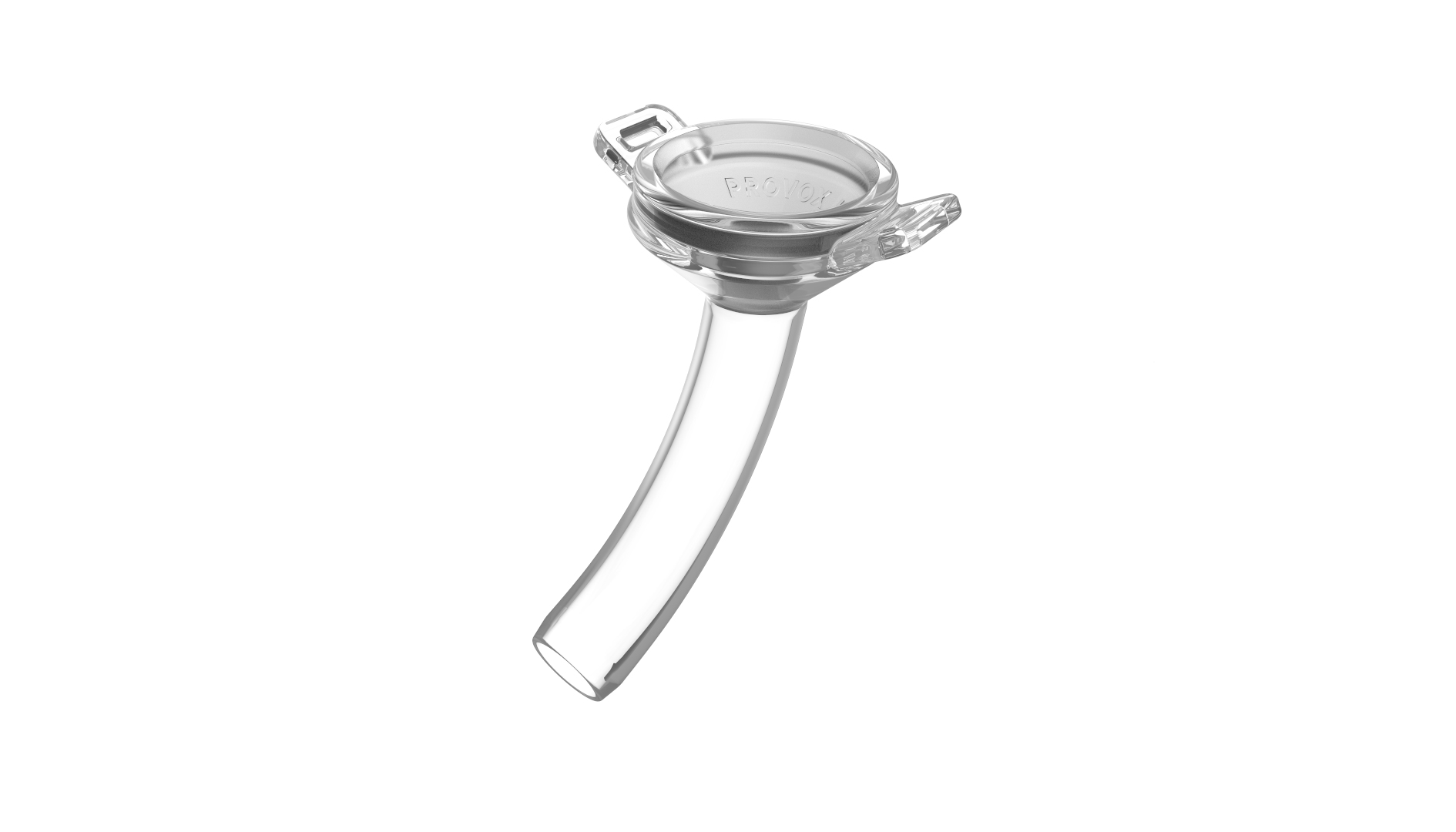Comprehensive Laryngectomy Clinical Resources
We provide healthcare professionals with comprehensive information and resources on laryngectomy products and clinical care. Here, you will find evidence-based content, best practices, and the latest research to enhance your understanding and skills in managing patients who have undergone a laryngectomy.
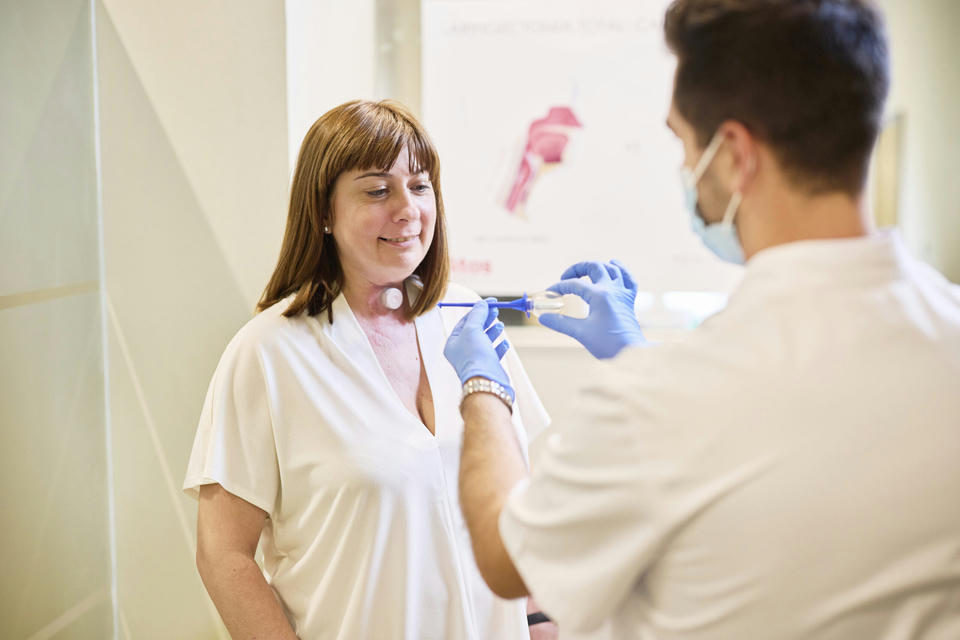
A total laryngectomy involves the removal of the larynx, resulting in significant changes to breathing, speaking, and swallowing.1 This life-changing surgery requires specialized care and knowledge to achieve the best possible patient outcomes. Our goal is to support you in delivering the highest standard of care, improving quality of life, and keeping you up to date with the latest advancements in laryngectomy care.
Whether you are a nurse, physician, or speech therapist, we invite you to explore our resources. These include detailed guides on pre- and post-operative care, innovative products such as voice prostheses and Heat and Moisture Exchangers (HMEs), and insights from clinical studies and patient experiences. Join our community of engaged professionals committed to excellence in laryngectomy care.
Voice rehabilitation
Voice is important; it’s how people communicate and express their thoughts and feelings, so losing the voice after a total laryngectomy procedure can be overwhelming for patients.
There are several ways to regain voice after a laryngectomy, and to compensate for the loss of phonation. Tracheoesophageal speech and the use of a voice prosthesis is the gold standard method for voice rehabilitation.2, 3
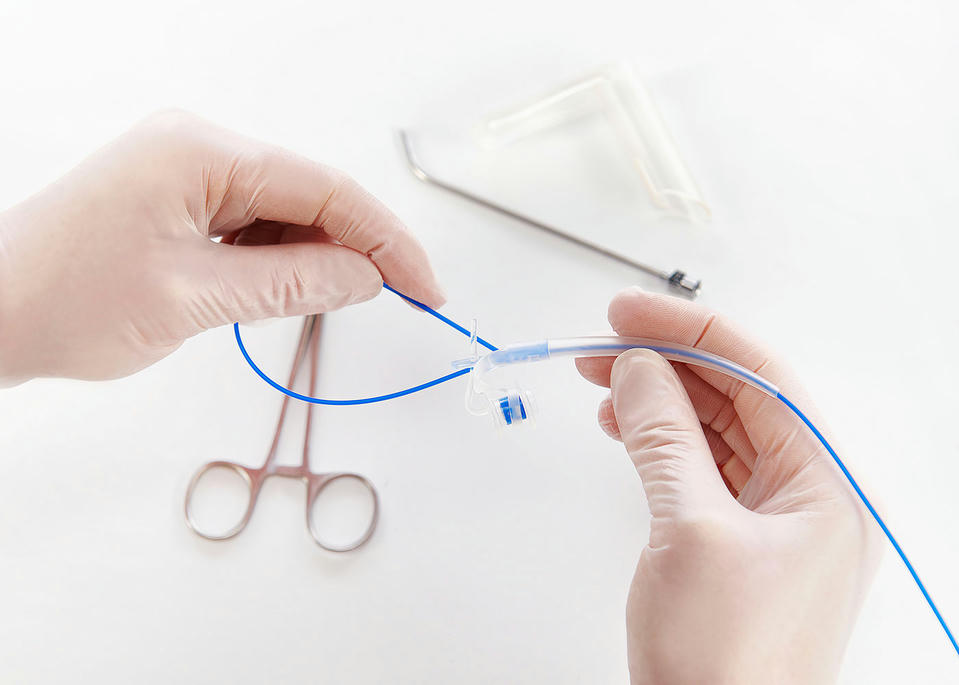
Primary Puncture
A procedure carried out during total laryngectomy surgery, allowing tracheoesophageal speech.
Secondary Puncture
A puncture made any time after total laryngectomy surgery, allowing tracheoesophageal speech.
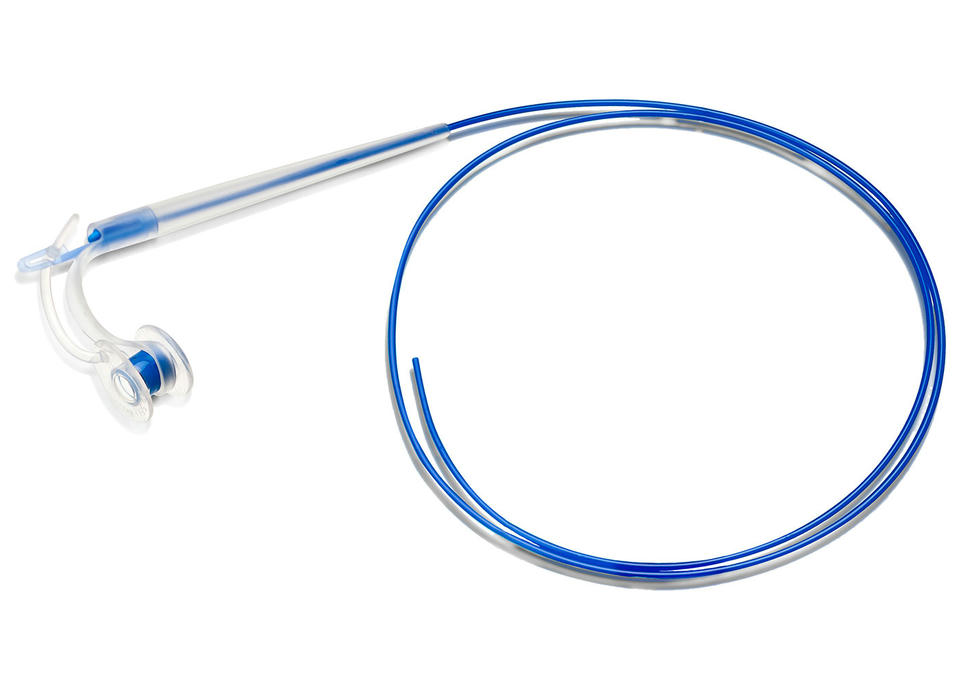
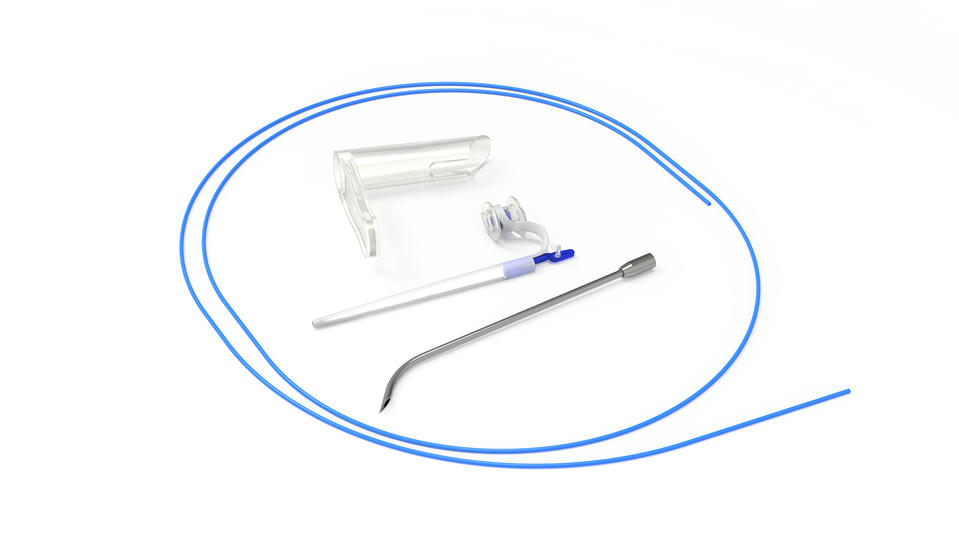
Provox Vega Puncture set
Learn more on how to reload the Provox Vega Puncture Set.
What is a Voice Prosthesis?
A voice prosthesis is a medical device used to help people who have had their larynx removed during a total laryngectomy. This voice prosthesis is inserted into a tracheoesophageal puncture (TEP) either during the surgery (primary placement) or after (secondary placement).
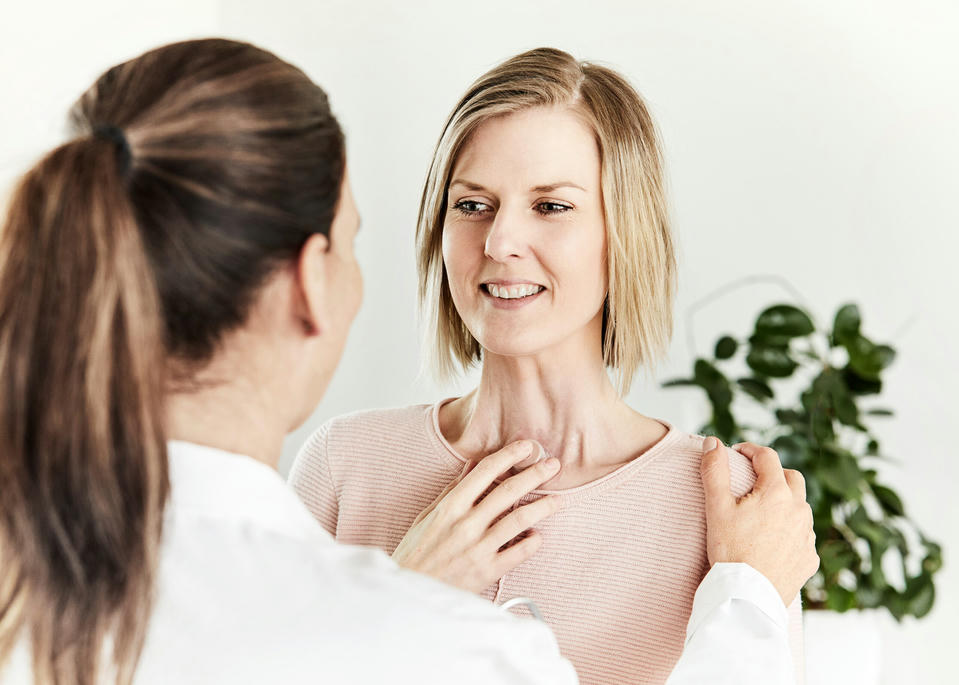
Our voice rehabilitation products
View our range of products that help patients regain their speech.
Pulmonary Rehabilitation
After undergoing a total laryngectomy, a patient will breathe through a stoma in their neck. This means the air they breathe won’t be humidified or heated before reaching the lungs. This unconditioned air can negatively impact pulmonary health.1
HMEs help improve patients’ pulmonary health by humidifying and filtering the air they breathe.4
Ward study
A clinical study showing improved pulmonary outcomes as a result of implementing a day and night regimen with HMEs.
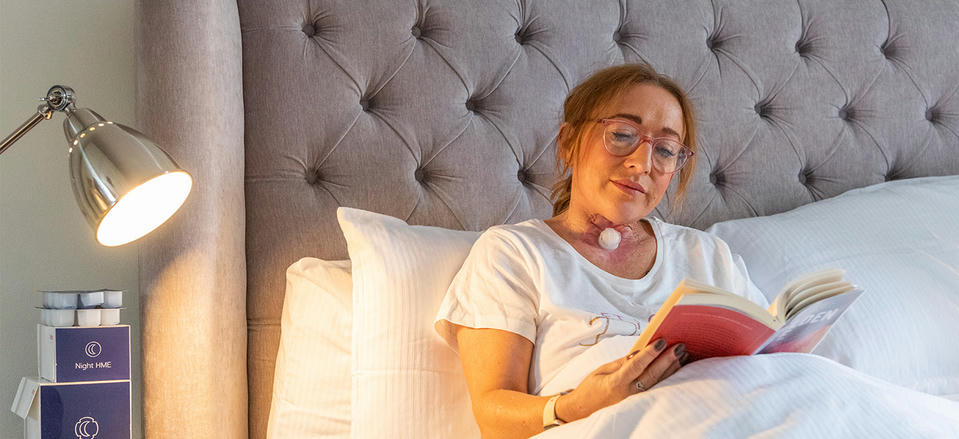
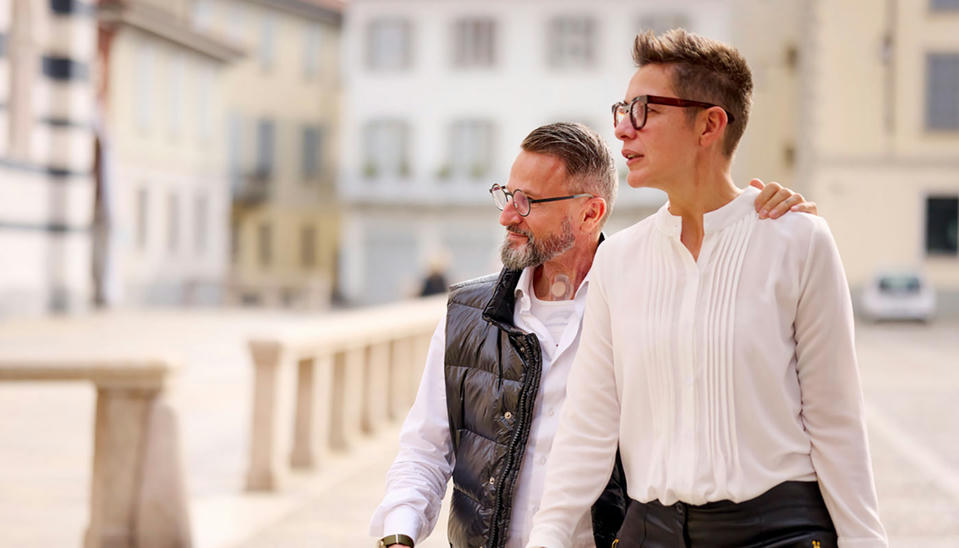
Longobardi study
A clinical study showing improved pulmonary outcomes as a result of implementing a day and night regimen with HMEs.
Healthy peristomal skin
Careful adhesive selection plus appropriate application and removal techniques can help prevent skin injuries and maintain the integrity of the peristomal skin.
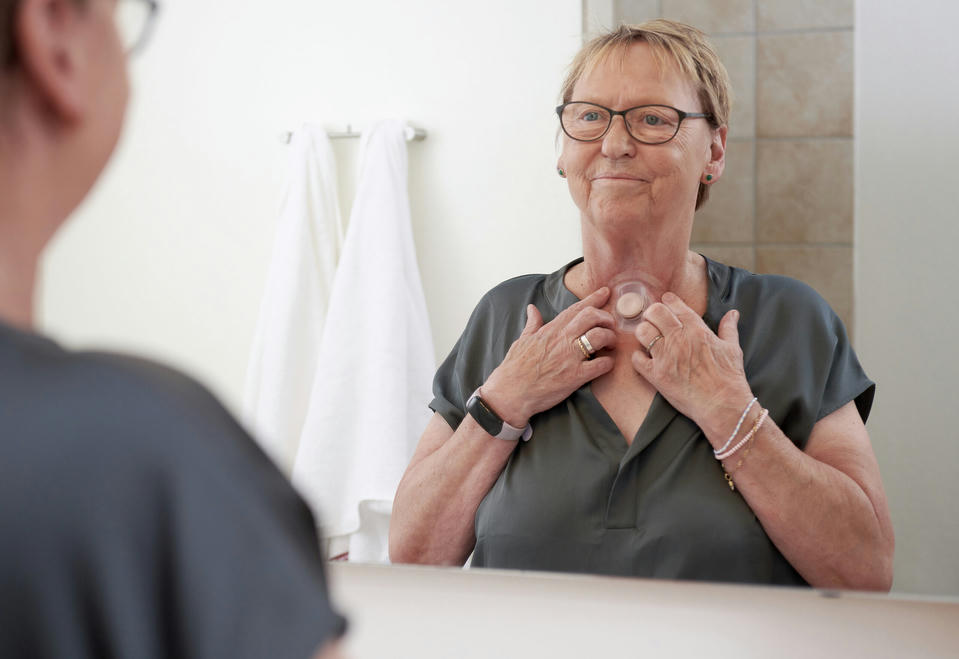
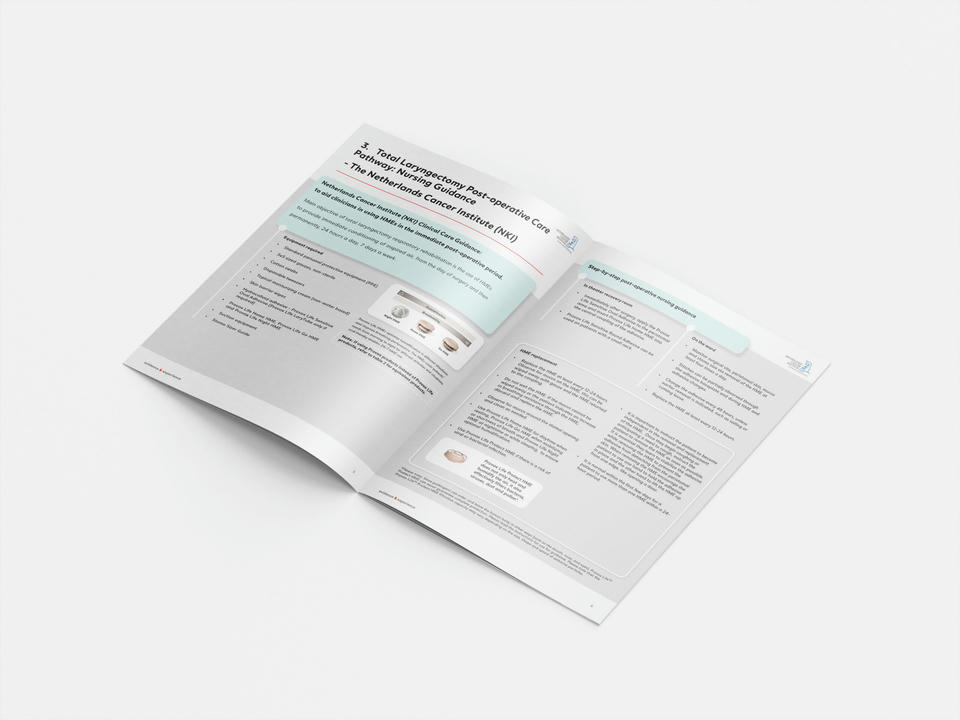
Clinical Practice Guidance: Total Laryngectomy Post-Operative Pulmonary Care Pathway
Learn more about the post-operative pulmonary pathway used in the Netherlands Cancer Institute by downloading this clinical practice guidance. The document includes the protocol followed at the Netherlands Cancer Institute for early adoption of HMEs and adhesives post-operatively.
Our pulmonary products
View our range of products that help patients breathe better.
Learn more

Laryngectomy products
We offer a wide range of high-quality devices for laryngectomy care. Voice prosthesis for speaking, HMEs (Heat and Moisture Exchanger), adhesives and tubes for breathing, accessories, and more.

Events
Discover and register for an upcoming Atos Learning Institute clinical event. Our virtual events feature subject matter experts and the latest clinical evidence to support healthcare professionals and improve patient outcomes.

Education
Atos Learning Institute provides on and offsite local training opportunities for use of our products and practice of the latest techniques.
References
1. Hilgers FJ, Ackerstaff AH, Aaronson NK, Schouwenburg PF, Van ZN. Physical and psychosocial consequences of total laryngectomy. Clin Otolaryngol Allied Sci. 1990;15(5):421-5.
2. Maniaci A, La Mantia I, Mayo-Yáñez M, Chiesa-Estomba CM, Lechien JR, Iannella G, et al. Vocal Rehabilitation and Quality of Life after Total Laryngectomy: State-of-the-Art and Systematic Review. Prosthesis. 2023;5(3):587-601.
3. van Sluis KE, van der Molen L, van Son R, Hilgers FJM, Bhairosing PA, van den Brekel MWM. Objective and subjective voice outcomes after total laryngectomy: a systematic review. Eur Arch Otorhinolaryngol. 2018;275(1):11-26.
4. Zuur JK, Muller SH, de Jongh FH, van Zandwijk N, Hilgers FJ. The physiological rationale of heat and moisture exchangers in post-laryngectomy pulmonary rehabilitation: a review. Eur Arch Otorhinolaryngol. 2006;263(1):1-8.






